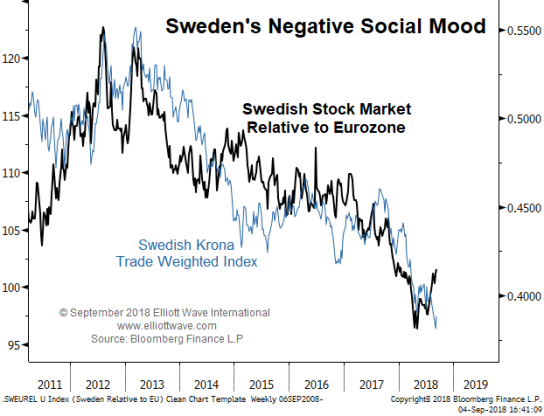A 1:2 stock split is a common strategy used by companies to make their shares more accessible to a broader range of investors. By splitting shares, a company increases the number of outstanding shares while reducing the price per share, allowing more people to invest without changing the overall value of the company. In this article, we’ll explore what a 1:2 stock split means, why companies choose to do it, and how it can affect investors and market dynamics.
Key Takeaways
- A 1:2 stock split doubles the number of shares but halves the price per share, keeping total value unchanged.
- This strategy can enhance liquidity, making shares more appealing to small investors.
- Companies often split stocks to signal confidence in growth and attract more retail investors.
- Market reactions can include short-term price increases, known as the announcement premium.
- Despite the split, the company’s overall value remains the same; it’s just the share count and price that change.
Understanding the Concept of a Stock Split

Definition and Mechanism
Okay, so what is a stock split? Basically, it’s when a company decides to increase the number of its shares outstanding. Think of it like cutting a pie into more slices. You still have the same amount of pie, but now it’s in smaller pieces. A stock split doesn’t actually change the company’s overall value. For example, in a 2-for-1 split, if you owned one share worth $100, you’d end up with two shares, each worth $50. The total value of your holdings stays the same, but there are more shares floating around. This can make the stock seem more affordable to smaller investors.
Types of Stock Splits
There are a few different ways a company can split its stock. The most common is the forward stock split, like the 2-for-1 example we just talked about. But you might also see 3-for-1, 5-for-1, or even higher splits. The bigger the first number, the more shares you get for each one you already own. For instance, Alphabet Inc. completed a stock split in mid-2022. There are also less common splits, like 3-for-2, where you get three shares for every two you own. The basic idea is always the same: increase the number of shares and decrease the price per share proportionally.
Comparison with Reverse Stock Splits
Now, let’s talk about the opposite of a stock split: the reverse stock split. Instead of increasing the number of shares, the company decreases them. So, if a company does a 1-for-5 reverse split, every five shares you own get combined into one share. This makes the price per share go up. Companies usually do this when their stock price is really low, and they want to avoid being delisted from an exchange or just improve their image. Reverse stock splits are often seen as a sign that a company is struggling, while regular stock splits are usually viewed more positively. It’s important to understand the difference, so you don’t confuse the two! Schedule 13G filings provide insights into ownership.
It’s important to remember that neither a stock split nor a reverse stock split changes the underlying value of the company. These are just accounting tricks to adjust the share price and number of shares outstanding. Always look at the fundamentals of the business before making any investment decisions.
Reasons Behind a 1:2 Stock Split
Enhancing Share Liquidity
One of the primary reasons companies go for a 1:2 stock split is to boost the liquidity of their shares. Think of it like this: when a stock’s price gets too high, fewer people can afford to buy it. A split brings the price down, making it easier for more investors to trade the stock. Increased liquidity generally leads to tighter bid-ask spreads and reduced transaction costs, which is good for everyone involved.
Attracting Retail Investors
Companies often want to make their stock more appealing to individual, or retail, investors. A high stock price can be a psychological barrier. A 1:2 split cuts the price in half, making it seem more affordable. It’s like putting something on sale – suddenly, it looks a lot more attractive. This can broaden the shareholder base and increase demand for the stock. For example, Apple has split its stock multiple times, including a four-for-one split in 2020, to maintain accessibility for a wider range of investors. This strategy aims to attract retail investors who might have been priced out before the split.
Management’s Growth Confidence
A stock split can also signal that management is confident about the company’s future prospects. It’s like saying, "We believe our stock price will continue to rise, so we’re splitting it to keep it accessible." This can boost investor sentiment and lead to further price appreciation. However, it’s important to remember that a split doesn’t change the underlying value of the company; it’s more of a cosmetic change. It’s a bit like changing a twenty dollar bill into two tens – you still have twenty dollars, just in a different form. It’s a signal that the company anticipates continued business growth.
A stock split doesn’t magically create value. It’s a strategic move to improve market dynamics and investor perception. While it can be a positive sign, it’s crucial to look at the company’s fundamentals to determine its true worth.
Here’s a quick look at some potential pros and cons:
- Pros:
- Broader Ownership Base: More investors can afford the stock.
- Positive Signal: Shows confidence in future growth.
- Index Inclusion: Lower price may allow inclusion in certain indexes.
- Cons:
- Misinterpretation: Some may see it as a sign of underlying issues.
- Costs: Administrative and legal expenses are involved.
- Short-Term Volatility: Market may adjust to the new share structure.
Market Reactions to Stock Splits
Short-Term Price Movements
Okay, so a stock split happens. What next? Well, usually, there’s some buzz. The stock price often sees a little jump right after the split is announced. It’s like everyone’s excited about the ‘new’ cheaper shares. But, this excitement might not last. If the company’s fundamentals aren’t solid, that price bump could disappear pretty quickly. It’s all about whether the company can back up the hype with actual performance. Also, keep in mind that increased speculative trading may attract greater price shifts.
Long-Term Value Considerations
In the long run, a stock split itself doesn’t really change the value of the company. It’s more about how investors feel about the stock. If the company keeps doing well, the stock price will likely go up over time, split or no split. But if the company struggles, a split won’t save it. Think of it like this: splitting a pizza into more slices doesn’t give you more pizza. It just looks like more. The real value comes from the company’s earnings, growth, and overall health.
The Announcement Premium Phenomenon
There’s this thing called the "announcement premium." Basically, when a company announces a stock split, the stock price tends to go up a bit. Financial researchers have been studying this for ages. The average increase in value around the split announcement is about 2% to 4%. People get excited, thinking the lower price will attract more investors and boost liquidity. But it’s important to remember that this premium might be temporary. It’s all about market psychology and how investors react to the news. It’s worth keeping an eye on corporate actions to see how the market reacts.
Implications for Shareholders
Impact on Share Ownership
After a 1:2 stock split, the immediate effect on shareholders is a doubling of the number of shares they own. However, it’s important to understand that the total value of their investment remains the same immediately after the split. If you owned 100 shares before, you’ll now own 200. The price per share is adjusted accordingly, effectively halving. This doesn’t change your percentage ownership in the company; it’s simply divided into more units.
Psychological Effects on Investors
Stock splits can have interesting psychological effects. A lower share price might make the stock seem more accessible and attractive to new investors, even though the underlying value hasn’t changed. This perceived affordability can drive up demand, at least temporarily. Some investors might view a split as a sign of company confidence and future growth, further boosting sentiment. However, it’s also possible that some investors might misinterpret the split, leading to irrational buying or selling decisions. It’s all about investor sentiment and how they perceive the news.
Tax Considerations
Generally, a stock split itself isn’t a taxable event. The IRS doesn’t consider it a sale or exchange of stock. Your cost basis per share is adjusted to reflect the split. For example, if you bought a share for $100 and the company does a 1:2 split, your new cost basis is $50 per share. When you eventually sell your shares, capital gains or losses will be calculated based on this adjusted cost basis. It’s always a good idea to consult with a tax professional for personalized advice, especially if you have a complex investment situation. Keep in mind that tax implications can vary.
It’s important to remember that a stock split is primarily a cosmetic change. The underlying value of the company remains the same. While there might be short-term market reactions, long-term investment decisions should be based on the company’s fundamentals, not just the split itself.
Here’s a quick summary:
- Number of shares doubles.
- Price per share halves.
- Total value of holdings remains the same (initially).
- No immediate tax implications.
Evaluating the Effectiveness of Stock Splits
It’s time to look at how well stock splits actually work. Do they really do what companies hope they will? Let’s get into it.
Historical Performance Analysis
To figure out if stock splits are effective, we can look back at how stocks have performed after splits in the past. Did the price go up? Did more people start trading the stock? Did the company actually benefit? It’s not always a clear picture, but looking at the numbers can give us some clues. For example, we might compare the average stock performance of companies that have split their stock against a control group that hasn’t. This helps us isolate the effect of the split itself. We can also look at different time periods to see if the market’s reaction to splits has changed over time. This kind of analysis helps us understand the real-world impact of stock split decisions.
Market Trends and Investor Behavior
How the market and investors react to stock splits can change over time. What worked ten years ago might not work today. We need to consider things like:
- The rise of online trading platforms.
- The increasing popularity of fractional shares.
- Changes in how investors perceive stock splits.
Investor psychology plays a big role. A split might make a stock seem more affordable, but it doesn’t change the company’s actual value. Understanding these trends helps us see if stock splits are still a useful tool for companies.
Case Studies of Successful Splits
Looking at specific examples can be really helpful. What companies saw a big boost after a split? What did they do right? What can we learn from their success? For example, let’s say Company A split its stock and saw a huge increase in trading volume. We could look at their investor relations strategy, their marketing efforts, and the overall market conditions at the time to see what contributed to their success. On the other hand, we can also look at companies where the split didn’t have much of an impact, or even had a negative impact. By studying both successes and failures, we can get a better sense of when a stock split strategy is likely to be effective.
Challenges and Criticisms of Stock Splits
Misinterpretation of Value
One of the main issues with stock splits is that they can be misunderstood. Some investors might think a split makes the company more valuable, but that’s not really true. The total value of the company stays the same; it’s just divided into more shares. It’s like cutting a pizza into more slices – you don’t get more pizza, just more slices. This misunderstanding can lead to irrational buying, which isn’t good for the market in the long run. It’s important for investors to understand stock valuation techniques to avoid this trap.
Potential Negative Perceptions
Sometimes, a stock split can send the wrong message. If a company does too many splits, people might think they’re trying to artificially inflate the stock price instead of focusing on real growth. This can damage the company’s reputation. Also, there are costs involved with doing a split, like legal fees and paperwork. If the split doesn’t lead to any real benefits, it can look like the company is wasting money.
Market Dynamics in Modern Trading
The way people trade stocks has changed a lot. Now, you can buy fractional shares, meaning you don’t have to buy a whole share. This makes stock splits less important for making a stock affordable. Also, high-frequency trading and algorithmic trading can make the market more volatile after a split. This increased volatility might not be good for all investors. Plus, with all the security concerns in the cryptocurrency sector, people are more aware of potential risks in the financial markets.
Stock splits can sometimes attract speculative trading, leading to greater price swings. This increased volatility is often undesirable for both companies and investors. It’s important to remember that the positive effects of a stock split may be short-lived, and any gains are likely to be temporary if the underlying business fundamentals don’t support the optimism generated.
Here’s a quick look at some potential downsides:
- Increased volatility
- Costs associated with the split
- Potential for misinterpretation
Future of Stock Splits in Investing

Trends in Corporate Actions
Corporate actions are always changing, and stock splits are no exception. We’re seeing a few interesting trends. For one, companies might be weighing stock splits differently now, especially with the rise of other strategies to manage stock prices and investor perception. Also, the frequency of stock splits might fluctuate based on overall market conditions and investor sentiment. It’s worth keeping an eye on how companies use corporate actions like splits in their broader financial strategies.
Impact of Fractional Shares
Fractional shares have changed the game. They let investors buy a portion of a share, which reduces the need for stock splits to make shares affordable. Think about it: if you can buy $50 worth of a $1,000 stock, the high price isn’t as big of a barrier. This development could mean fewer stock splits, as companies might rely on fractional shares to attract retail investors. It’s a pretty big shift in how people access the market.
Institutional Investor Perspectives
Institutional investors, like hedge funds and pension funds, often have a different view on stock splits than retail investors. They usually focus on the overall value of their investment rather than the price per share. So, while a stock split might create some short-term buzz, it might not significantly impact their investment decisions. Understanding how these big players view investing in stocks can give you a more complete picture of the market dynamics at play.
Stock splits are becoming less impactful due to fractional shares. This has reduced the necessity of splits for increasing accessibility. Frequent stock splits might be seen as financial engineering rather than a focus on fundamental business growth.
Final Thoughts on Stock Splits
In summary, a 1:2 stock split can be a useful tool for companies looking to make their shares more affordable and appealing to a broader range of investors. While it doesn’t change the actual value of the company or the total worth of an investor’s holdings, it can create a perception of accessibility. This often leads to increased trading activity and can even boost the stock price in the short term due to heightened interest. Investors should keep in mind that while stock splits can signal management’s confidence in future growth, they should not be seen as a fundamental change in the company’s financial health. Understanding these dynamics can help investors make informed decisions when they encounter stock splits in the market.
Frequently Asked Questions
What is a stock split?
A stock split happens when a company divides its existing shares into more shares. For example, in a 2-for-1 split, if you had one share worth $100, you would now have two shares worth $50 each. The total value remains the same.
Why do companies decide to split their stocks?
Companies split their stocks to make shares more affordable for everyday investors. This can attract more buyers and increase trading activity.
Does a stock split change the value of my investment?
No, a stock split does not change the total value of your investment. You have more shares, but each share is worth less, so the overall value stays the same.
What is the impact of a stock split on the market?
Stock splits can lead to short-term price increases as they often create excitement among investors. However, the long-term value of the company does not change.
Are there any downsides to stock splits?
Some investors may view stock splits as a sign that a company is struggling, which could lead to negative perceptions. Also, not all investors understand how splits work, which can cause confusion.
What is the future of stock splits in investing?
With the rise of fractional shares and changes in how people invest, stock splits may become less common. However, they are still used to make shares seem more accessible to regular investors.

Peyman Khosravani is a global blockchain and digital transformation expert with a passion for marketing, futuristic ideas, analytics insights, startup businesses, and effective communications. He has extensive experience in blockchain and DeFi projects and is committed to using technology to bring justice and fairness to society and promote freedom. Peyman has worked with international organizations to improve digital transformation strategies and data-gathering strategies that help identify customer touchpoints and sources of data that tell the story of what is happening. With his expertise in blockchain, digital transformation, marketing, analytics insights, startup businesses, and effective communications, Peyman is dedicated to helping businesses succeed in the digital age. He believes that technology can be used as a tool for positive change in the world.

































